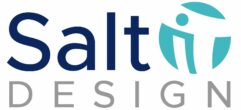In today’s digital landscape, businesses and website owners are constantly seeking ways to improve their online presence and drive more traffic to their websites. While traditional SEO strategies such as keyword optimization, backlinking, and mobile-friendliness play a crucial role, an often-overlooked factor contributing to organic growth is web accessibility.
Recent findings reveal that after implementing accessibility solutions, websites experienced an average 12% increase in overall traffic. Moreover, 73.4% of the reviewed websites saw a significant boost in organic traffic. These numbers underscore the importance of making websites accessible—not just as a moral obligation or legal requirement, but as a strategic move for enhancing visibility and engagement.
Web Accessibility: A Moral, Legal, and Business Imperative
Web accessibility ensures that people with disabilities can navigate and interact with digital content effectively. The Americans with Disabilities Act (ADA) mandates that businesses must provide accessible digital experiences, reinforcing the ethical responsibility of inclusivity. However, beyond compliance, investing in accessibility yields tangible business benefits, particularly in search engine optimization (SEO).
How Accessibility Enhances SEO
1. Improved Website Usability
When a website is accessible, it provides better user experience for all visitors. Features like clear navigation, readable fonts, descriptive alt text for images, and keyboard-friendly interactions enhance usability. Google’s algorithms prioritize websites that deliver positive user experiences, leading to better search rankings.
2. Increased Engagement and Reduced Bounce Rates
An accessible website is structured to accommodate various user needs, including those with visual, auditory, cognitive, and motor impairments. When users find a website that is easy to navigate, they are more likely to stay longer, explore more pages, and engage with the content. This decrease in bounce rate and increase in dwell time are positive signals to search engines, boosting SEO performance.
3. Enhanced Mobile-Friendliness
Many accessibility improvements overlap with mobile optimization. Features such as responsive design, resizable text, and voice navigation make the site more user-friendly on mobile devices. Since Google prioritizes mobile-first indexing, accessible sites gain an edge in search rankings.
4. Better Indexing and Crawling by Search Engines
Search engines rely on structured data, alt text, and properly labeled HTML elements to understand website content. Accessibility enhancements, such as ARIA landmarks and proper heading structures, make it easier for search engine bots to index content accurately. This leads to better ranking potential.
5. Increased Audience Reach
An estimated 1 billion people worldwide have some form of disability. By making a website accessible, businesses tap into a broader audience, increasing traffic and engagement. Additionally, accessible websites often perform better across different devices and assistive technologies, further expanding their reach.
Case Studies: The Impact of Web Accessibility on Traffic Growth
Several businesses have reported significant improvements in organic traffic after implementing accessibility solutions:
- E-commerce Sites: An online retailer that optimized its website for screen readers and added alt text to product images saw a 15% increase in organic traffic and a 9% boost in conversions.
- News & Media Websites: A media company that restructured its headings, improved contrast ratios, and enhanced video captions reported a 20% increase in session durations and a 13% reduction in bounce rates.
- Educational Institutions: A university website that adopted WCAG 2.1 standards experienced a 17% increase in organic traffic within six months.
Making Accessibility a Priority
Website owners can take several steps to improve accessibility and, in turn, enhance SEO:
- Use descriptive alt text for images to help visually impaired users and improve image search rankings.
- Structure content with proper headings (H1, H2, H3, etc.) to improve readability and indexing.
- Ensure color contrast meets accessibility standards to enhance readability for users with vision impairments.
- Enable keyboard navigation for users who cannot use a mouse.
- Provide transcripts and captions for multimedia content to aid users with hearing impairments and boost video search rankings.
- Implement ARIA (Accessible Rich Internet Applications) landmarks to help assistive technologies navigate content effectively.
Conclusion: Inclusive Design Drives Organic Growth
The evidence is clear: web accessibility is not just about compliance or ethics—it is also a powerful driver of organic traffic and search visibility. With an average 12% increase in overall traffic and 73.4% of websites seeing improved organic growth, businesses that prioritize accessibility gain a competitive edge in the digital marketplace.
By making websites more inclusive, businesses not only serve a diverse audience but also strengthen their SEO strategy, resulting in higher engagement, lower bounce rates, and improved rankings. Investing in accessibility is not just the right thing to do, it’s a strategic decision that leads to measurable growth and success in the online world.
